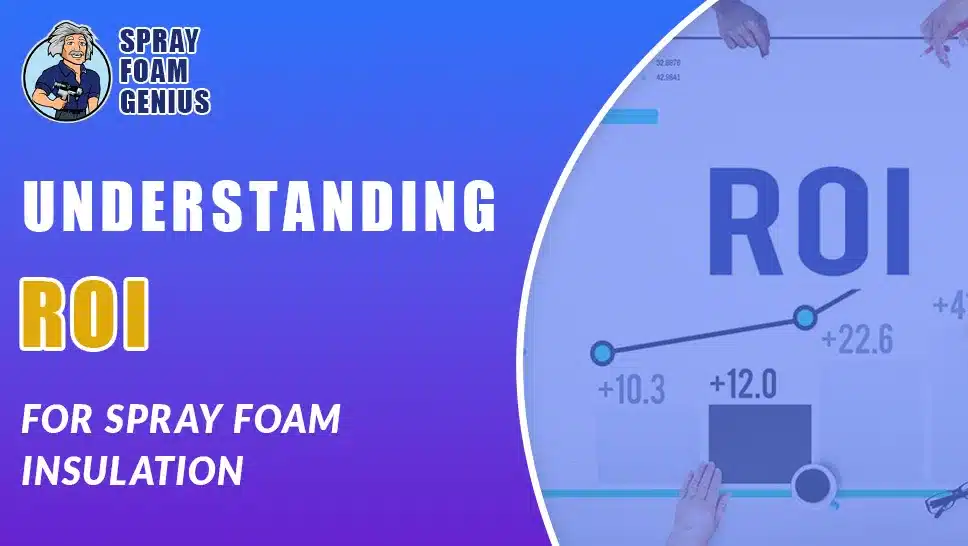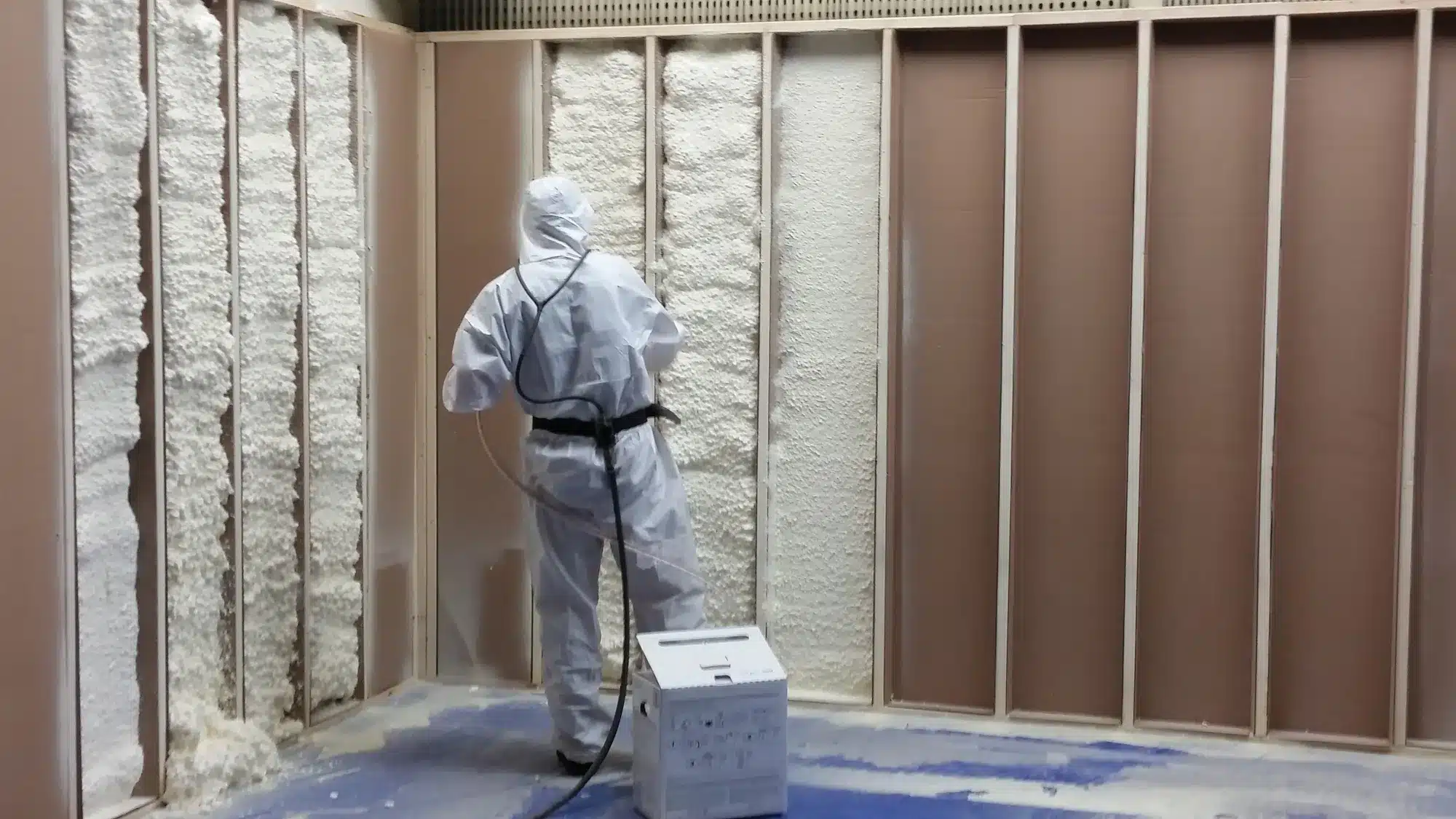
In the competitive field of spray foam insulation, grasping the return on investment (ROI) is essential for contractors aiming to optimize their profits and deliver substantial value to clients. At Spray Foam Genius Marketing, we specialize in a range of services tailored for spray foam insulation contractors across the USA and Canada, including SEO, Google Business Profile Optimization, Local SEO, Website Development, Lead Generation, Social Media Marketing, and Reputation Management. This detailed guide will explore the ROI of spray foam insulation, offering critical insights into cost analysis, long-term savings, and practical strategies for maximizing your investment.
What is Spray Foam Insulation?
Spray foam insulation is a highly effective method for enhancing the energy efficiency of buildings. It is applied as a liquid that expands and solidifies into foam, creating an airtight seal that helps reduce energy loss and improves indoor comfort. Spray foam insulation is used in various applications, from residential homes to commercial buildings, and comes in two primary types: open-cell and closed-cell.
Open-Cell Spray Foam
- Characteristics: Open-cell spray foam is light, flexible, and has a lower R-value per inch compared to closed-cell foam.
- Applications: It is primarily used in interior spaces where soundproofing and air sealing are needed.
- Benefits: Offers excellent soundproofing and is effective at insulating walls and ceilings.
Closed-Cell Spray Foam
- Characteristics: Closed-cell spray foam is denser and more rigid, with a higher R-value per inch.
- Applications: Suitable for areas requiring high moisture resistance and structural reinforcement, such as roofs and exterior walls.
- Benefits: Provides superior insulation, and moisture resistance, and adds strength to the building structure.
Why ROI Matters for Spray Foam Insulation
Calculating ROI is critical for evaluating the financial benefits of spray foam insulation. For contractors, understanding ROI assists in setting competitive prices, demonstrating value to clients, and making strategic business decisions. ROI analysis involves comparing the initial cost of installation with the financial savings and other benefits realized over time. This metric impacts both profitability and customer satisfaction, influencing long-term success.
Cost Analysis of Spray Foam Insulation

Initial Costs
The initial investment in spray foam insulation includes several components:
- Material Costs: The cost of spray foam insulation varies based on the type (open-cell or closed-cell) and the quantity needed. On average, open-cell spray foam costs between $0.44 to $0.65 per board foot, while closed-cell spray foam ranges from $0.90 to $1.50 per board foot.
- Labor Costs: Labor costs depend on factors such as the complexity of the job, the size of the area to be insulated, and regional wage rates. Typically, labor costs range from $0.50 to $1.00 per board foot. Experienced installers can ensure high-quality applications, which is crucial for achieving optimal performance.
- Equipment Costs: Spray foam application requires specialized equipment, including spray rigs and protective gear. Equipment costs can be significant but are usually spread over multiple projects.
- Preparation and Cleanup Costs: Before installation, the area needs to be prepared, which may involve removing old insulation or repairing surfaces. Cleanup after the job also incurs additional costs, such as disposal of waste materials.
Long-Term Savings
The long-term savings associated with spray foam insulation are primarily derived from its energy efficiency benefits:
- Energy Savings: Spray foam insulation provides excellent thermal performance by creating an airtight seal, which reduces heating and cooling costs. Homeowners can typically expect a reduction of 30% to 50% in energy bills due to improved insulation.
- Maintenance Savings: Spray foam insulation helps prevent moisture infiltration and reduces air leaks, leading to fewer issues with building materials and a lower need for repairs and maintenance. This can translate into significant savings over time.
- Increased Property Value: Properties with spray foam insulation often see an increase in resale value due to their enhanced energy efficiency and comfort. Potential buyers recognize the benefits of lower energy costs and improved indoor climate.
Comparing ROI with Other Insulation Types
When evaluating the ROI of spray foam insulation, it’s helpful to compare it with other insulation types:
- Fiberglass Insulation: Fiberglass insulation is a common alternative that typically costs less upfront compared to spray foam. However, it has a lower R-value and is less effective at air sealing, which can result in higher long-term energy costs.
- Cellulose Insulation: Made from recycled paper, cellulose insulation is a cost-effective option with good thermal performance. However, it may not offer the same level of air sealing as spray foam, potentially impacting long-term savings.
- Reflective or Radiant Barrier Insulation: These materials reflect heat and can be effective in hot climates but may not provide the comprehensive insulation benefits of spray foam. The ROI for reflective barriers can vary based on the specific climate and application.
Factors Affecting ROI
Several factors can influence the ROI of spray foam insulation:
- Energy Prices: Changes in energy prices can impact the amount of savings realized from improved insulation. In regions with high energy costs, the ROI of spray foam insulation is often higher due to greater potential savings.
- Building Size and Design: Larger buildings or those with complex designs may see varying ROI due to differences in installation difficulty and the quantity of insulation required. Custom or challenging installations can affect overall costs and savings.
- Climate: Extreme climates, whether hot or cold, can enhance the ROI of spray foam insulation. In regions with harsh weather conditions, the energy savings from better insulation are more pronounced.
- Local Incentives: Some regions offer financial incentives or rebates for energy-efficient improvements, which can improve the ROI of spray foam insulation. Research local programs to maximize your investment.
Best Practices for Maximizing ROI
To achieve the best ROI from spray foam insulation, consider these best practices:
- Accurate Estimation: Ensure precise measurements and accurate cost estimates to avoid overestimating or underestimating material and labor costs. Proper planning helps prevent budget overruns and ensures a smooth installation process.
- Professional Installation: Hiring experienced and reputable professionals is crucial for proper application and optimal performance. A quality installation can prevent issues that may affect the effectiveness and ROI of the insulation.
- Quality Materials: Invest in high-quality spray foam products to maximize insulation performance and durability. Using top-grade materials ensures better thermal performance and longer-lasting results.
- Regular Maintenance: Conduct routine inspections and maintenance to ensure the insulation remains effective over time. Addressing any issues promptly helps maintain optimal performance and protects your investment.
Take Your Business To The Next Level!
Understanding the ROI of spray foam insulation is essential for both contractors and clients. By analyzing initial costs, long-term savings, and key factors influencing ROI, you can make informed decisions that benefit your business and enhance customer satisfaction. At Spray Foam Genius Marketing, we are dedicated to supporting spray foam insulation contractors with expert marketing services tailored to your needs. For more information or to discuss how we can assist with your marketing strategy, please contact us at:
- Phone: 877-840-FOAM for USA and 844-741-FOAM for Canada
- Website: Spray Foam Genius Marketing
- Email: [email protected]
- How to Use Pinterest to Market Your Spray Foam Insulation Services - December 27, 2023
- How to Use LinkedIn to Grow Your Spray Foam Insulation Business - December 23, 2023
- How to Use Instagram to Showcase Your Spray Foam Insulation Projects - December 16, 2023

